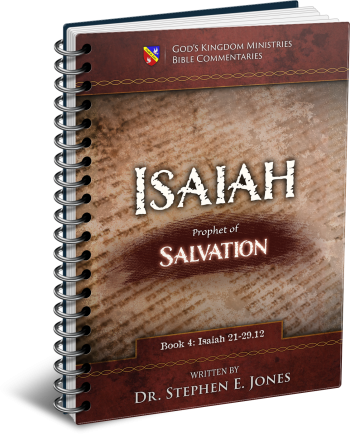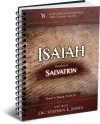Latest Posts
View the latest posts in an easy-to-read list format, with filtering options.

Isaiah is the prophet of Salvation. He is also known as the truly "Universalist" prophet, by which is meant that He makes it clear that salvation is extended equally to all nations and not just to Israel. He lived to see the fall of Israel and the deportation of the Israelites to Assyria, and he prophesied of their "return" to God (through repentance). He is truly a "major prophet" whose prophecies greatly influenced the Apostle Paul in the New Testament.
Category - Bible Commentaries

Isaiah 27 contains another song about God’s protection and ultimate deliverance of Israel, especially in view of her captivity. The theme of the song is the overthrow of “Leviathan.” Leviathan is the prophet’s name for Draco, the constellation of the twisted serpent pictured in the heavens. As we will see, Draco had manifested in three forms: Assyria, Babylon, and Egypt. The great Deliverer (Christ) was to come in battle to crush the serpent under His feet and to bring deliverance to the earth.
To fully appreciate Isaiah’s prophecy in Isaiah 27, we must know something about the stars and constellations and their biblical revelation. (Modern astrology is a perversion of biblical astronomy.)
Draco is one of the many constellations in the heavens that reveal the divine plan, when understood correctly. Psalm 19:1 tells us,
1 The heavens are telling the glory of God; and their expanse is declaring the work of His hands.
The revelation of God’s glory is seen not only in the majesty of creation itself but also in the constellations that God named. Psalm 147:4 says,
4 He counts the number of the stars; He gives names to all of them.
We also read in Genesis 1:14,
14 Then God said, “Let there be lights in the expanse of the heavens… and let them be for signs and for seasons…
The stars and constellations are prophetic “signs” that bear silent witness of the revelation of the divine plan from Christ’s birth through the Virgin (Virgo) to His coming as the Lion (Leo) of the tribe of Judah. So Psalm 19:2 says,
2 Day to day pours forth speech, and night to night reveals knowledge. There is no speech, nor are there words; their voice is not heard [i.e., a silent testimony].
Each of the constellations have three Decans, which are sub-constellations that reveal details of the main constellation’s revelation of Christ. Draco is the third Decan in the constellation Sagittarius, the Archer pictured as a Centaur (two natures).
Christ is both the Son of God and the Son of Man, so He is pictured in the heavens as a Centaur, half man and half horse. He is pictured again in the constellation named Centaur, which paints a similar picture of Christ.
Sagittarius is from the word sagitta, “arrow.” His Hebrew name is Kesith, “Archer.” As the Son of Man, He is the “man” portion, and the “horse” is from the Hebrew word sus. Rev. 19:11 pictures Christ seated on a white horse. Centaur is the upper part of a man’s body with the lower portion being the horse, as if seated on a horse.
Christ’s Hebrew name is Yeshua, “Salvation,” but His Greek name is Iesus, or Yah-Sus, “Yahweh’s horse.” The horse was a symbol of salvation in Hebrew thought.
A good teacher was said to be an archer who could hit the bull’s eye of truth. Sagittarius pictures Christ as the Teacher of Righteousness that was prophesied in Joel 2:23. The KJV reads, “He hath given you the former rain [moreh] moderately.”
In the Hebrew, this has a dual meaning. The term moreh, “former rain,” also means “teacher, archer.” The word translated “moderately” is tsedaqah, or “righteousness,” from which is derived the name Zadok. So the phrase could be rendered “He has given you the Teacher of Righteousness,” which is a messianic prophecy.
In ancient times, some Jews followed the teachings of a man named Zadok and considered him to be the fulfillment of this prophecy in Joel 2:23. This is how the sect called Sadducees (Zadokites) came about. However, we know that the prophecy was actually about Jesus Christ, the great Teacher of Righteousness.
The work of Sagittarius (Christ) is pictured in its three decans: Lyra the harp, Ara the altar, and Draco the dragon. All three of these factor into the song in Isaiah 27. Verse 1 speaks specifically of Draco under the name Leviathan. Isaiah’s revelation is written as a song (verse 2), and the altar theme is set forth in Isaiah 27:9 (ungodly altars) and verse 13 (the true altar on “the holy mountain.”).
Lyra is thus interpreted by Isaiah as a song of praise and deliverance from captivity. The captivity came as a result of the Israelites worshiping at foreign altars of the false gods of Assyria, Babylon, and Egypt. The solution in Isaiah 27:13 is that they will ultimately “come and worship the Lord in the holy mountain of Jerusalem.”
This, however, comes only after Israel has been delivered from Draco, the inspiration behind all false worship.
All of this deception began in the Garden in Gen. 3:1, which says, “Now the serpent was more crafty than any beast of the field.” Paul tells us in 2 Cor. 11:3,
3 For I am afraid that, as the serpent deceived Eve by his craftiness, your minds will be led astray from the simplicity and purity of devotion to Christ.
Hence, we see Draco in his “craftiness” as he deceives the whole world, causing them to be led astray from the pure gospel of Christ. The “fleeing serpent” in Isaiah 27:1 is one trying to escape the Seed of the woman whose heel is about to crush his head. The Zodiac of Denderah pictures Draco under the forefoot of Sagittarius. The brightest star in Draco is Thuban, “the subtle,” or “the crafty one.”
But there is another side to the revelation, seen in a similar constellation.
In the main constellation of Aries, the Ram, we find the pictorial story of Christ who came to die as the Ram. (Note how God provided “a ram caught in the thicket” in Gen. 22:13.) Passover always occurred under the constellation Aries. Its three Decans are Cassiopeia, the captive bride delivered, Cetus, the sea monster that is bound, and Perseus, “the Breaker” (Micah 2:13) who delivers the bride after binding Cetus. In Scripture, Christ is the Breaker of Babylon.
Here Cetus, the sea monster, is the oppressor of the bride of Christ. Actually, there are two brides, one captive and in bondage, the other set free. Cetus is seen, not in his role as a deceiver but in his role as the oppressor. This oppressor is killed by Perseus, whose name is derived from the Hebrew Perez, “to divide, break up.” It is also the root of the name Persia, and so it is used in Dan. 5:28 of the Persians, prophesying that Babylon’s kingdom “has been divided and given over to the Medes and Persians.”
The Bible prophesies this in Micah 2:13, saying,
13 The breaker goes up before them; they break out, pass through the gate and go out by it; so their king goes on before them, and the Lord at their head.
Christ is the “Breaker” who leads the armies of heaven as the Lord of hosts. So Isaiah 27:1 says, “and He will kill the dragon who lives in the sea.” We see, then, how the prophet weaves more than one thread in his prophecy in Isaiah 27:1,
1 In that the day the Lord will punish Leviathan the fleeing serpent [Draco], with His fierce and great and mighty sword, even Leviathan the twisted serpent; and He will kill the dragon [Cetus] who lives in the sea.
Christ comes as Sagittarius to punish Draco by crushing him under his feet; and He comes as Perseus to kill the sea monster. King Cyrus of Persia was thus called “His anointed” (Isaiah 45:1), representing Christ, the Breaker, who overthrew the Babylonian Draco.
This small portion of the Gospel of the Stars is necessary to understand the prophetic song in Isaiah 27.